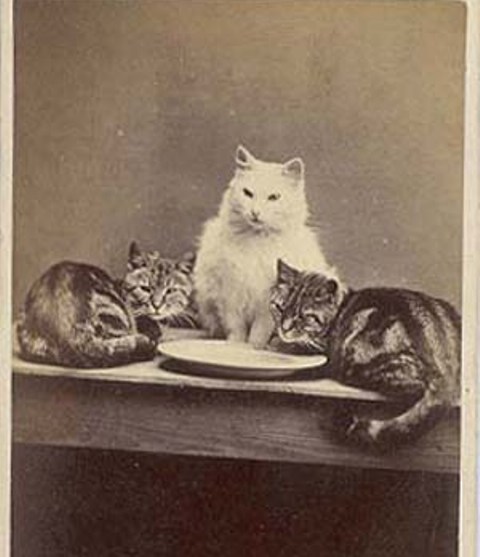
The movers and shakers of New York City were quite a progressive bunch during the holidays in the late 19th and early 20th centuries, especially on Thanksgiving Day. This story about their efforts at the Essex Market Police Court is just one example of their generosity.
According to news reports in The New York Times from the 1890s to the 1930s, not a court prison in the city, nor a hospital or nonprofit institution of any kind in which “the unlucky and the unfortunate” were sheltered was overlooked. On Thanksgiving Day, tens of thousands of New York City residents in dire straights would receive a free meal with all the fixings, courtesy of the many churches or the settlement houses and other charitable institutions headed by the Department of Charities.

Many well-to-do private donors also contributed to the charity feasts, including socialites like Mrs. William Douglas Sloane and Mrs. William Waldorf Astor.
On November 29, 1907, The New York Times noted:
“If any one in New York missed turkey yesterday on account of hard times it was because he had hidden himself so well that a Sherlock Holmes could not have found him, for never was there a Thanksgiving Day here when so much effort was made to bring cheer and a sense of gratitude to all… The day was strikingly one of gratitude expressed in a mighty effort on the part of the fortunate to make glad the less fortunate.”
The Essex Market Police Court and Prison
In 1907, the Essex Market Police Court and Prison (aka, Third District Prison) was a major hub of activity in the Lower East Side. As one of five district prisons in the city – the others were the Harlem Prison, the West Fifty-third Street Prison, the East Fifty-seventh Street Prison, and Jefferson Market Prison — it served as a temporary holding place for criminals being arraigned in the adjoining magistrates’ court, and for prisoners waiting to be transferred to the city prison, popularly known as The Tombs.
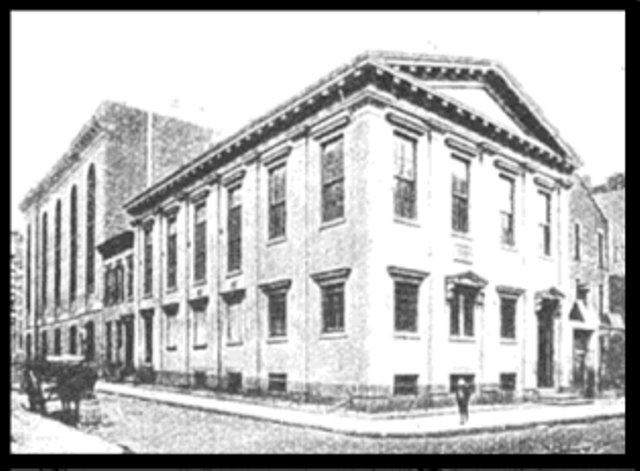
In the late 19th and early 20th centuries, it was common to see 50 or more defendants lined up outside when the Essex Market Police Court opened in the morning. Most of the accused served by this court and prison were Eastern European Jewish immigrants, who lived in squalor in the neighborhood’s overcrowded, dimly lit, and dilapidated tenements that first sheltered earlier German immigrants. Tenements across from the court housed the “offices” of attorneys who advertised their services with large signs. The “lawyers” with the largest signs seemed to do the most business.
Thanksgiving at the Prison, 1907
The male and female inmates were not the only cause of overcrowding at the Essex Market Prison. The prison was apparently also overrun with cats, thanks to Minnie, the prison’s mascot cat. According to news reports, Minnie had a record of 45 families of kittens during her tenure. (The big push to spay and neuter pets didn’t start until the 1970s.)
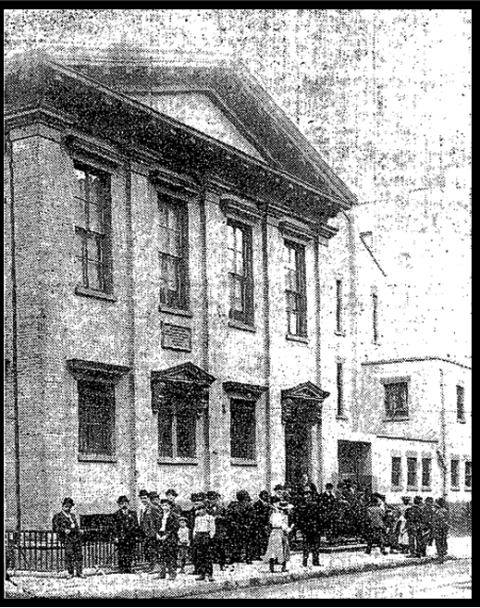
Nonetheless, on Thanksgiving Day in 1907, all of the prisoners at Essex Market received a big chicken dinner served by veteran matron, Mrs. R.R. Fitzgerald. The men also received cigars and the women prisoners got candy. Minnie was well fed, too: She ate so much chicken that they had to call in a nearby veterinarian the next day.
Many Minnie Felines
Minnie was an extremely popular name for cats in the previous century. I wonder if this is because of Minnie Maddern Fiske, one of the leading American actresses and playwrights of the late nineteenth and early twentieth century. Minnie, nee Marie Augusta Davey, not only had numerous triumphs on the Broadway stage in New York, but she was also one of the most prominent animal welfare advocates of her era.
Although she claimed to detest felines, Minnie was actually renowned for her tender feelings toward cats, particularly for all the strays that roamed the city streets. Whenever stray cats came around her house, she would befriend it by feeding it for a few days, and then place a ribbon around the cat’s neck before giving the cat to a friend. She was quoted as saying, “You will never have any trouble in giving away a cat that wears a handsome bow.”
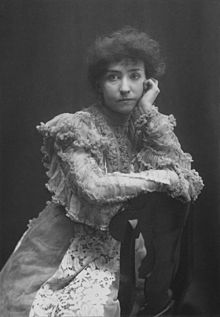
The Shyster of Essex Market Police Court
If you know any Yiddish words at all, you probably know that a person who is professionally dishonest — especially in the practice of law or politics – is called a shyster. Although most dictionaries state that the word probably originates from the German scheisser (defecator), it may have in fact originated at the Essex Market Police Court in the 1800s.
According to Henry Ford, author of The International Jew: The World’s Foremost Problem, there was once a Clinton Street lawyer named Scheuster, whose practices were not very scrupulous, and who was quite a nuisance to Justice Barnabas W. Osborne in the late 1840s. Whenever another Yiddish lawyer attempted a shady trick, Judge Osborne would declare it a “Scheuster practice.”
The Demise of the Essex Market Court
Two years after this Thanksgiving feast, Borough President John F. Ahearn requested that a committee investigate conditions at the old court building. The committee advised the most practical thing to do was tear down the building. The report noted:
What a disgrace to New York. A vile place like this would not be tolerated in Turkey. Some of the committee have seen the dungeons in the various castles in Spain. We have the same conditions today in the Essex Market Court, which is unchanged from the day it was built in 1856. We take good care of our horses and our dogs. Why not extend the same human feeling for the unfortunates locked up in the cells of this court house? There is not a Grand Juror who would not object to having his dog kept in so vile a place.
Finally on January 13, 1911, the building was abandoned and a moving van carted away whatever furniture and records could be salvaged from 69 Essex Street to the first floor of the Florence Building, a multi-purpose community center located at 22 Second Avenue (near First Street).
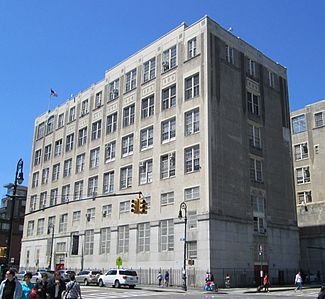
In 1929, Seward Park High School, named for Governor William H. Seward, was built on the site of the Essex Market Police Court and Ludlow Street Jail. Seward Park High School, formerly P.S. 62 Intermediate, was the first high school built in the Lower East Side. Some famous alumni of the school include Tony Curtis, Walter Matthau, Jerry Stiller, and Keenan Ivory Wayans. The high school closed in 2006.



[…] in 1856, the Essex Market Prison was located on 2nd Avenue between 1st and 2nd Street. It was notable for its large cat population, including the famous Minnie the cat. The Ludlow Street Jail was just nearby, and these two […]